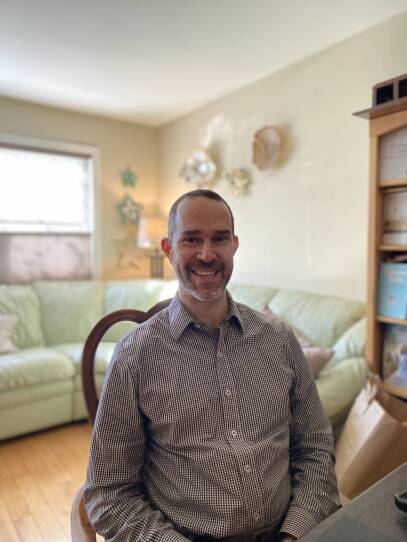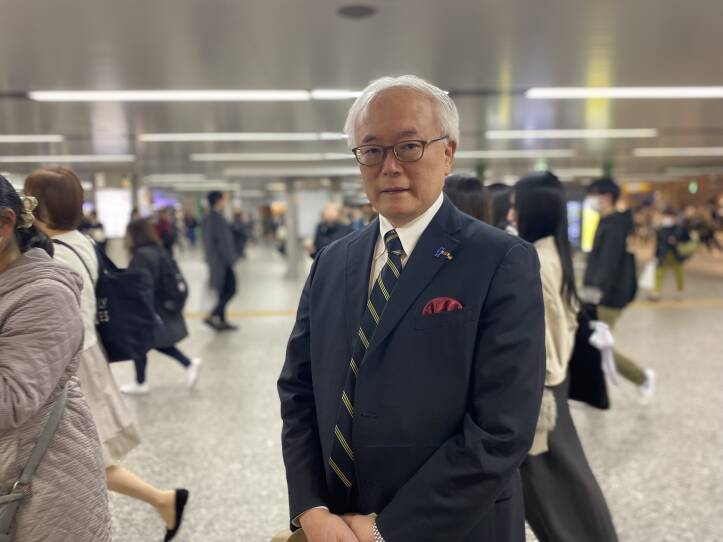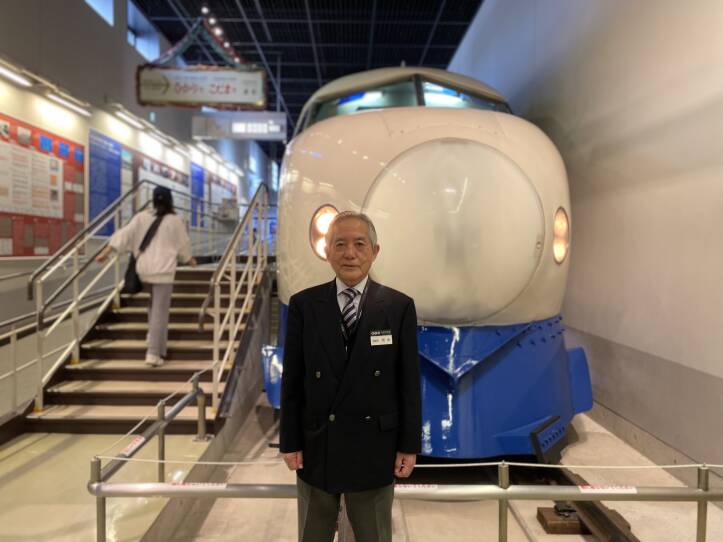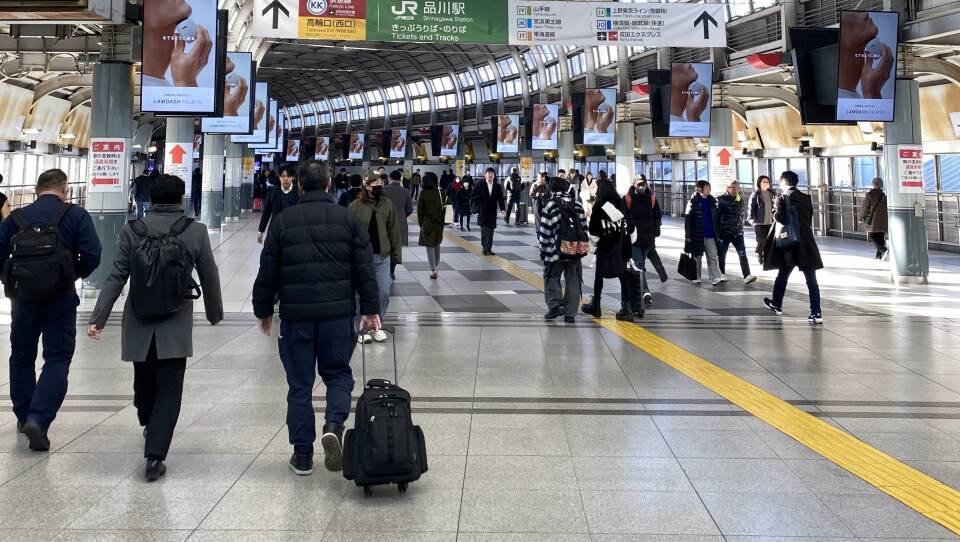This is part one of a two-part series on transit lessons from Tokyo. Read the second part here.
When Daniel Aldrich first stepped foot in Japan as a foreign exchange student, he didn’t speak a word of Japanese and wasn’t sure how he’d find his way around.
“I was just a junior in high school from North Carolina,” he said. “I was really worried.”
But soon after arriving, Aldrich found that he could zip anywhere within the crowded Tokyo metropolis by walking a few minutes to the nearest train stop.
“I found Tokyo to be the subway of the future,” he said.
Now a professor of politics and public policy at Northeastern University, Aldrich lives in Brighton with his wife and four children. But he’s always felt the pull of Tokyo — so much so that he’s returned for research and fellowships, spending a total of six years living in the city.
“I found Tokyo to be the subway of the future.”Daniel Aldrich
In Japan, his family doesn’t need a car. They walk or take the train to get groceries or explore the city. In Boston, cars are the norm, as are the dangers surrounding their use. Two of Aldrich’s children have been hit by a car in the past five years. (They’ve since recovered.)

The split experience of life in Tokyo and Boston reshaped Aldrich’s worldview, and made him increasingly aware of the ways large and small that Massachusetts could become less car dependent and how transportation planning can transform societies — for better or worse.
Tokyo’s transit system is massive, with more than 800 train stations serving some 40 million people daily. Trains are frequent, punctual and profitable. They’re so popular that transit operators employ a horde of professional people pushers, known locally as oshiya, to stuff passengers into trains during rush hour. In the unlikely event that a train is late, riders are given special notes explaining the delay to their bosses..
Such a system seems unimaginable in Greater Boston, a region defined by gridlock, where small talk often begins with how long you spent stuck in the car. The average driver spent 88 hours in traffic jams in 2023. That translates to roughly 3.6 days a year lost to commuting. Public transit is an option, but most people in Massachusetts — 72 percent— drive anyway. In Tokyo, just 12 percent of journeys are made by car.
Why the stark difference?
According to Aldrich, a side-by-side comparison of Boston and Tokyo offers a glimpse into how transportation policy can make or break a city. Boston’s traffic, he said, is the end-result of prioritizing cars over all other modes of transportation — a norm in American infrastructure planning. That’s likely to be reinforced under the the Trump Administration, which has warnedthat it plans to halt all federal grant funding for projects like bike lanes.
“In the United States, you get car culture,” said Tomohiko Taniguchi, a former rail executive and advisor to former prime minister Shinzo Abe. It’s the opposite in Japan, he said, noting the way teenagers meet at train stations to socialize with friends or romantic interests.
“A cute love affair will pop up around these busy train stations,” Taniguchi said.

Japan’s transit culture can be traced back to the late 1800s, according to Fumihiro Araki, deputy director of Japan’s Railway Museum, which houses dozens of old trolleys, rail cars and defunct bullet trains outside of Tokyo.
“When Japan moved from a shogun government [with leaders who were emperor-appointed] to a democratic government in the late 19th century, it was decided that railways were absolutely necessary,” he said.
Ironically, Tokyo wanted to catch up to Western cities, including Boston, because of their rapid growth as industrial hubs. New manufacturing plants were popping up along major railroad lines across Massachusetts. Streetcars and subways began carrying thousands of people to and from work every day. Boston launched America’s first underground subway in 1897 as the city’s population more than doubled from 1880 and 1920.

In the mid-1900s everything changed. The US began throwing money at highways, not railways — including around Boston. Car use exploded, and residents fled the city’s urban core. In 1955, Business Week published the article, “New England Highway Upsets Old Way of Life,” detailing how the development of Route 128 led to rapid suburbanization around Boston. The city, like much of the US, also began instituting parking minimums in its zoning laws to address spiking demand for places to keep cars.
In Japan, which was recovering from World War II, leaders made massive investments in transit, which coincided with a population boom in Tokyo. And the train system has expanded organically alongside the city ever since.
Tokyo vs. Boston rail today
Today, there are more than a hundred different train lines spanning Tokyo. Rapid-service commuter lines carry millions of people from bedroom communities to work in the city center. A massive system of bullet trains connects Tokyo to other major metropolitan hubs, traveling at speeds well over 150 miles per hour.
Public transit in Boston, on the other hand, lumbers along fitfully on a good day and ridership has been declining since the 1960's. Subway lines have been long-plagued by slow zones, and commuter trains only reach a maximum speed of 79 miles per hour. The MBTA is facing major operational and budgetary challenges due to decades of underinvestment.
As of February, the T’s ridership is66 percentof what it was before the Covid outbreak. During a recent board meeting, agency leaders said they don’t expect to get back to pre-pandemic levels any time soon. Transit advocates are concerned that long-term financial problems could lead to service cuts in the years ahead, which could lead to further declines in ridership.
Culture and incentives
Northeastern’s Daniel Aldrich said one easy fix for Boston’s transportation crisis would be de-incentivizing car use, as Tokyo has done. On-street parking is scarce around Tokyo, he said, and car-owners are required to show proof that they own or rent a parking space, which can be extremely pricey. There are also strict inspection regulations and high tolls on expressways that de-incentivize driving.
“It’s really hard to own a car,” Aldrich said. “But in Boston, I can pretty much drive anywhere I want to.”
In recent years, parking policy has shifted in Boston and surrounding communities. In 2021, the city began limiting the amount of parking needed to build new developments as well as affordable housing complexes. Last year, Somerville became the first city in Massachusetts to eliminate all parking minimums for new building construction.
Aldrich said he’s concerned that undoing decades of car culture is a near-impossible feat without massive new investments in transit infrastructure.
But he said the changes are steps in the right direction.





